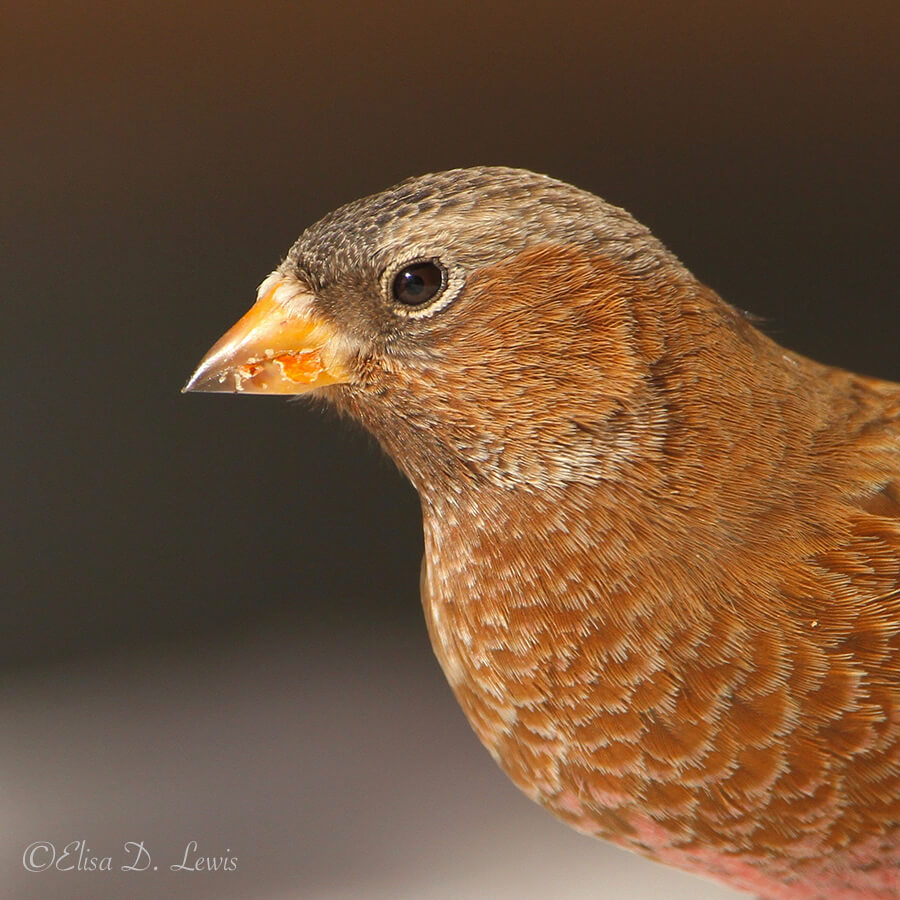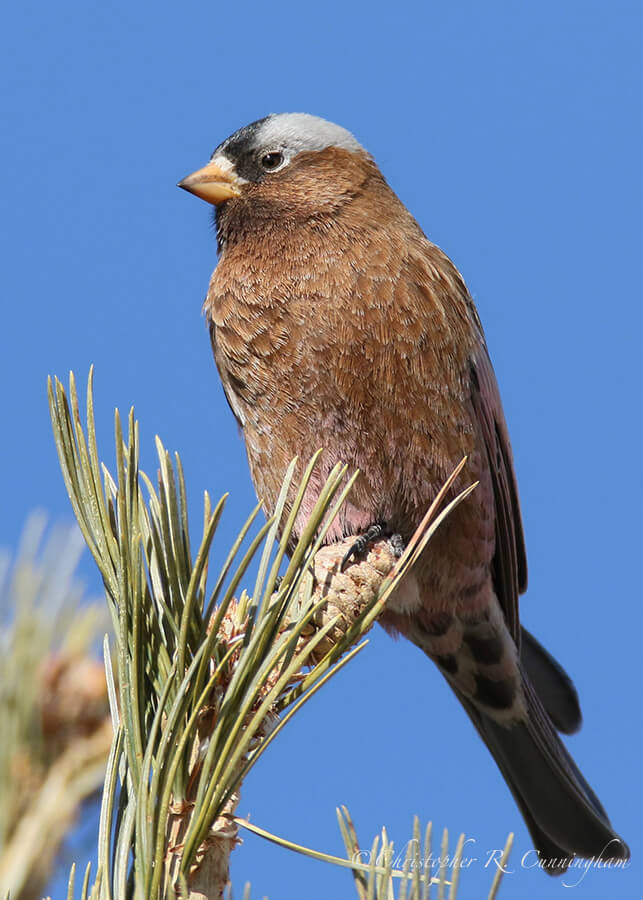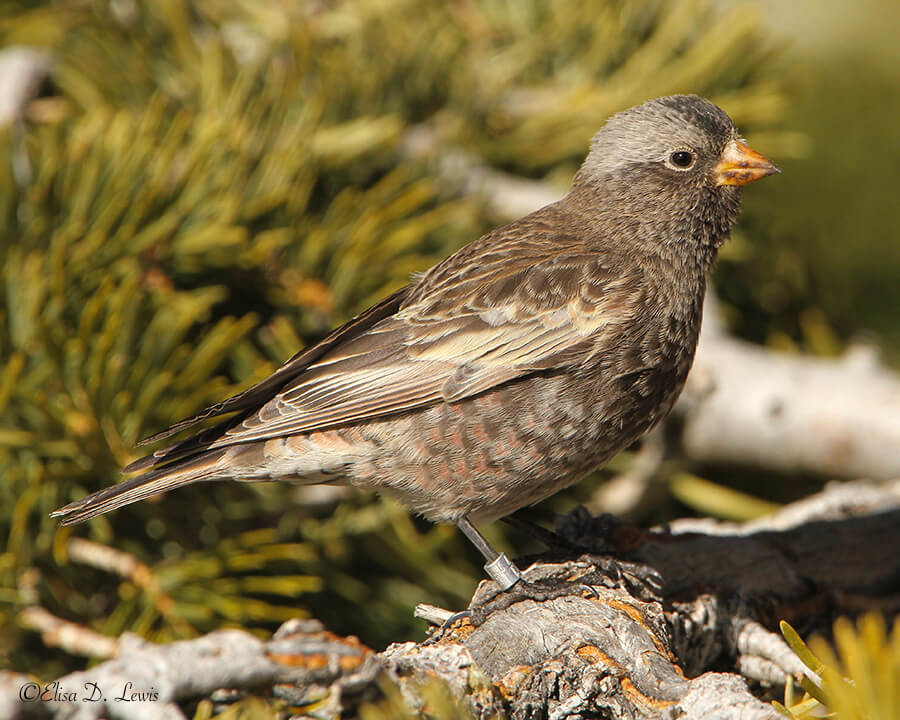It might well be that getting used to things up here was simply a matter of getting used to not getting used to them—but . . . .
―Thomas Mann, The Magic Mountain

Given their alpine habits, shy ways, and (generally) restricted geographic ranges, the Rosy-Finches are among the hardest birds in North America to see. The Brown-capped Rosy-Finch has the most restricted range of the the three species that occur in the U.S. and can only be seen in southern Wyoming, central Colorado, and northern New Mexico. In warmer weather, it tends to occur only at high elevation, but descends in winter. The Black Rosy-Finch has a larger, but sill relatively restricted range within the western interior of the U.S. The Gray-crowned Rosy-Finch has the widest distribution of the three species and ranges from northern New Mexico up through western Canada and Alaska, and across the Bering Strait into eastern Asia. All birds tend to be ground foragers for insects and seeds, which are often collected from the surface of snow. According to stateofthebirds.org, the Black and Brown-capped Rosy-Finches are of high conservation concern, and the Gray-crowned is of high moderate concern.

Sandia Crest, a snowy mountain-top about an hour drive east of Albuquerque, is an unusual place where all three species can be seen together in small flocks during winter. A gift shop and restaurant can be found on the crest at an elevation of about 10,600 feet. Getting up the icy, winding road to the top can be a bit hairy but well worth the anxiety . . . .
And now the hard part . . . feeders on the observation platform attract the birds which typically come and go throughout the day. The nature photographers in us struggle against this idea of seeking and photographing birds baited to a place. But as birds become rarer and rarer, and time and resources are so limited . . . .
Other alpine birds like Pine Grosbeaks and Red Crossbills can also (theoretically) be seen at Sandia Crest, but we were not lucky in this regard. In addition to the Rosy-finches we saw only Stellar’s Jays, White-crowned Sparrows, and Dark-eyed Juncos.
New Mexico is one of our favorite states to visit. Perhaps it has something to do with the romance of the prehistoric past. Some of the earliest North American cultures are named after places in New Mexico: Folsom, Clovis, and Sandia. Perhaps it is this state’s important role in the history of aerospace and nuclear technology, White Sands, Trinity . . . . To these attractions we can add a number first-rate birding sites like Sandia Crest, San Bernardo and Bosque del Apache NWR. We already have a return visit planned.

©2017 Elisa D. Lewis and Christopher R. Cunningham. All rights reserved. No text or images may be duplicated or distributed without permission.